This is the second segment of the Shaun Cooks story; you will want to read Part One before proceeding.
JeJuan Shauntel Cooks is a prisoner in the Eastham Unit in Lovelady, Texas. Ten years ago, he was sentenced to life in prison for allegedly firing two shots at a Milam County Sheriff’s Deputy. Cooks insists he couldn’t have committed the crime because he wasn’t carrying a gun. A semi-automatic pistol was discovered at the scene of the incident, but it was never tested for fingerprints, DNA, or gunshot residue. To his amazement, Cooks was unable to find a defense attorney willing to challenge the word of a respected sheriff’s deputy. This narrative will explain how, and why, our criminal justice system silences poor people of color.
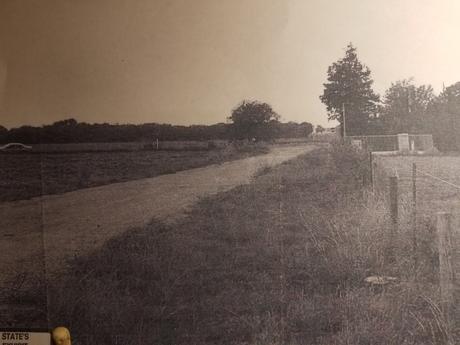
After a high-speed chase covering fifteen miles, Shaun Cooks stopped near the intersection of FM 484 and CR 260, and raced across a pasture. Shaun would have had time to hop the fence and disappear into the darkness if Deputy Chris White had followed him on foot. Instead, White drove across the muddy field, parking just to the right of Cooks. There are five versions of what happened next and they don’t agree on much.
Story #1

The story Shaun Cooks tells is pretty simple. Seeing Officer White’s patrol car slide to a stop a couple of feet to his right, Shaun realized he would likely be shot if he attempted to climb the fence. He just wanted to get as far away from the man in the patrol car as possible. Suddenly, Cooks lost control of his legs and felt wet grass and mud slamming into his face. His arms useless, there was nothing to break his fall. For several seconds the world fell silent. Then, as his hearing returned, he could hear the sound of gunfire from somewhere behind him.
Shaun was operating from instinct now. Desperate to get away from the gunfire, he struggled to rise, but he couldn’t. Then, seconds later, he could. But after a few unsteady strides his legs crumpled.
Seconds later, Shaun struggled to his feet a second time, but soon lost control of his limbs, just as at the first, and felt his face and torso slamming back into the unforgiving ground.
Seconds later, there was a pistol at the back of his head. “If you move,” a harsh voice said, “you die.”
A cop with the Hearne Police Department cuffed Shaun’s wrists. Still unsteady on his feet, he was led to a Hearne PD car. “You’re lucky I wasn’t the first man on the scene,” a second Hearne cop barked as Shaun passed within earshot, “cuz if I was, you’d still be lying in that field.”
Inside the police car, Shaun was searched. Then, a few minutes later, he was transferred to another police car and searched again.
By this time, the area was swarming with police cars from the police departments from the towns of Cameron and Hearne, and deputies with the Milam and Robertson County Sheriff Departments. An EMS vehicle from Cameron, the county seat of Milam County, pulled up. “What are you doing back there,” Shaun asked as the EMT pushed his head forward and pulled something from his lower back.
He didn’t receive an answer.
Story #2
The second story is what I call the “Beathard-White narrative”, because it is taken from the testimony of Jay Beathard (the man who investigated the case) and Deputy Chris White. This is, by far, the most complicated narrative of the five. In this account, Officer White stopped his car to the left of the suspect, and pulled his Taser as he exited the vehicle. The suspect attempted to run, but stumbled and plunged to the ground. Instead of bracing his fall with both hands outstretched, as one normally would, the man plowed straight into the ground, his right hand concealed suspiciously under his body.
Fearing the man on the ground might have a gun, White barked “show me your hands.”
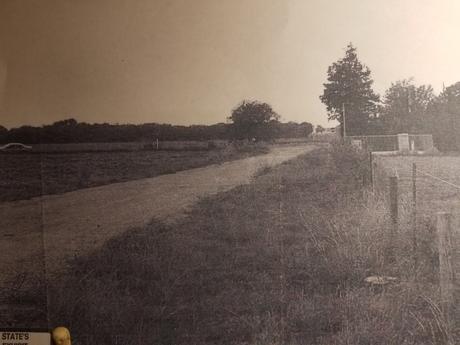
At this point, White says, he was standing over the suspect, just two or three feet away. The officer had one foot on the road, the other in the ditch. The two men were approximately fifteen feet from the police car.
Suddenly, White says, the suspect made a “furtive motion,” as if he was about to roll to the left, from belly to back, in White’s direction.
White struggled on the witness stand to provide a coherent description of what happened next. He heard two gunshots, he insists, but did not see a gun. He must have instinctively fired his Taser, he says, but has no memory of doing so. Turning his back on the suspect, White scrambled for safety between the fence and the front of his car. Only when, in the glare of the headlights, he saw the wires dangling from the front of his Taser, did he realize that his Taser had been discharged.
In the course of trial testimony, White and other officers gave jurors a crash course on how Tasers operate. Two probes are fired at a suspect, like pointed darts attached to thin wires. As the probes leave the Taser they begin to separate. They must be at least three or four inches apart in order to incapacitate a suspect. The Tasing effect doesn’t work unless both probes strike the target, one isn’t sufficient.
Sheltered behind his police car, White says he pulled the trigger on his Taser several times. A Taser can incapacitate a suspect for approximately five seconds; this is called a “cycle”. Each pull of the trigger produces another five-seconds of incapacitation.
White eventually decided that one of the probes must have missed the target. That’s because, looking over the trunk of his car, White glimpsed the suspect racing back across the field, toward the Mercedes. The runner was somewhere between 45 and 75 feet from White’s patrol car.
White fired two shots and Cooks crumpled to the ground. The deputy moved in Cooks’ direction, but, believing that the suspect was still armed and dangerous, White stayed ten or twelve feet away. The officer ordered the suspect to show both hands. Cooks complied.
Only at that point, White insists, did he use his radio, reporting that shots had been fired and requesting backup.
A few moments later (White couldn’t remember exactly how long), Wesley Edwards with the Robertson County Sheriff’s department arrived. White motioned toward the Mercedes, saying it wasn’t secure. Seconds later, Shawn Sayers with the Hearne police department arrived. Sayers performed the actual arrest and took the suspect into custody while White provided cover.
An hour later, Officer Jay Beathard appeared on the scene, took a statement from White, and conducted an investigation of the scene. Shortly after his arrival, Beathard found a 9mm semiautomatic handgun lying near the fence where White and the suspect had their initial encounter.
Story #3
The third account was related to me by Officer Shawn Sayers, the Hearne PD officer who made the actual arrest.
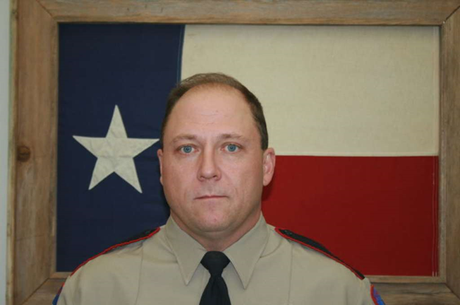
Sayers has great respect for White. The two men worked together for the Hearne Police Department several years earlier. “If Chris says something happened,” Sayers assured me when we spoke on the phone, “you can believe it.”
But when I provided a quick summary of White’s trial testimony, Sayers cut me off. “That’s not the way it went down,” he said.
Sayers’ account begins two miles from the scene at the Port Sullivan bridge on the Brazos River, the boundary line between Milam and Robertson counties. After receiving word that a fleeing suspect was headed their direction, Sayers and several other officers placed tack strips on the Robertson County side of the bridge. Only after hearing that that shots had been fired and backup was needed did Sayers and a second officer jump in their cars and head west to the crime scene. Even traveling at high speed, it would have taken well over one minute to cover that distance.
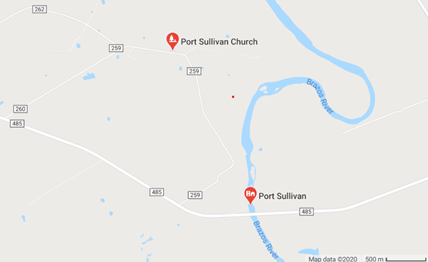
“When I arrived on the scene,” Sayers told me, “the suspect was running along the fence line, about 100 feet from White’s car, and he takes a big swan dive flat on his face.” When I asked if Cooks was running toward the Mercedes, Sayers said no. He was running parallel with the fence.
When Cooks fell, Sayers was able to catch up with him. Sayers warned the suspect not to move and slapped on the handcuffs.
Sayers says he rolled the suspect onto his back so he could get a look at his face. “Well, lookie here,” the Hearne cop said, “see what we got.” (Sayers and Cooks have a long history.)
Sayers insists he didn’t hear any gunfire. “By the time I got there,” he told me, “the shooting was all over.”
When I asked Sayers if Cooks appeared to be Tased, he said he couldn’t remember. “If he was, I didn’t do it,” he said. “Which is surprising because, back in those days, I Tased everybody.”
Story #4
The fourth account of the incident comes from the trial testimony of Shaun Cooks’ passengers, Brandi and Andrea Acosta.
Shaun left the Mercedes while it was still rolling, Brandi says, so she shifted the vehicle into park. It was too dark to see what was happening, but she could dimly see Shaun fall, rise, run, and fall a second time. She heard gunfire, but it was too dark to see who was doing the shooting.
Brandi says that Andrea, was convinced that Shaun was dead when he went down the second time and didn’t get up. Only when the sisters saw Cooks being escorted to a police car did they realize he had survived.
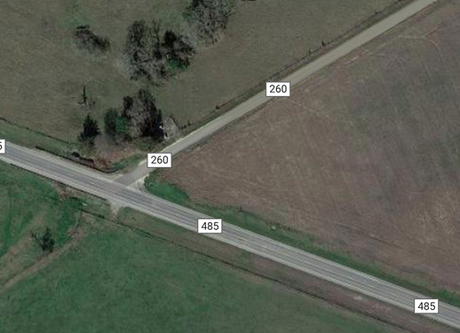
Andrea Acosta’s story is essentially the same as Brandi’s, with one striking exception. Andrea was asked how many shots were fired. “Two,” she answered. Asked if she meant that two bursts of several shots separated by several seconds had been fired, she answered yes.
Andrea says she heard two bursts of gunfire which sounded distinctly different. This account is highly suspect, for two reasons. First, according to Brandi, Andrea was screaming throughout the entire episode, so it is unlikely that she could remember how many shots were fired. When firearms experts can’t distinguish the sound of one semi-automatic handgun from another, it is unlikely that Andrea Acosta, while screaming frantically, could manage the feat.
Secondly, evidence of marijuana use was discovered in the Mercedes. This means that both girls faced potential drug charges and were inclined to tell the officers what they thought they wanted to hear. Andrea, only sixteen at the time of the incident, was particularly susceptible to this form of coersion.
Story #5
The fifth story comes from a statement the Milam Sheriff’s Department released to the local media. The same report was published in the Bryan Eagle and a regional television station. “While running, Cooks fired two shots from a pistol, authorities said. The Milam County deputy returned fire, investigators said. Neither the deputy nor Cooks was hit in the exchange, but Cooks fell to the ground and was arrested.”
This official statement, released by the Milam County Sheriff’s Office, has Cooks firing his weapon “while running”. This is in obvious conflict with the Beathard-White narrative which has Cooks firing his weapon while lying on his back. It is is possible that officer White’s initial incident report had Cooks firing on the run, but defense counsel never received that report. What they got was White’s “supplemental report” which was compiled three full days after the incident. A supplemental report expands upon an original statement. Did White’s first attempt to describe the events of that night have Cooks firing his weapon “while running”? Until the original report surfaces, we can only speculate.
It should also be noted that the report provided by the Milam County Sheriff’s Office appeared in several different media outlets in precisely the same form. This suggests that the text provided by the Sheriff’s office was repeated verbatim.
Aftermath
With Shaun Cooks safely in custody, Brandi Acosta’s baby was released to the custody of Beverly Daniels, Brandi’s mother. Meanwhile, Shaun Cooks and the Acosta sisters were placed in separate Hearne police cars and transported twenty miles to the Milam County Jail in Cameron.
Shaun was searched for a third time as he was booked into the jail. This time, a jailer found something in his jean pocket that previous searches had failed to turn up: a tiny Tylenol bottle containing a single rock of crack cocaine.
An hour after the incident, Jay Beathard arrived to investigate the crime scene. He says he found a 9mm semi-automatic handgun lying by the fence. Two shell casings from White’s .45 were lying on the road, but the only casing from the 9mm discovered at the scene was jammed in the ejection port of the weapon (what gun experts call a “stovepipe jam”).
No attempt was made to test for gunshot residue, fingerprints or DNA. His investigation complete, Beathard drove to the County Jail in Cameron to interrogate the suspects.
Chris White, badly shaken from his ordeal, drove home.
What happened at the intersection of FM 485 and CR 260 was not simple and straightforward. Several accounts of the incident exist and they are in serious tension. In particular, as we shall see, Shawn Sayers account contradicts White’s story at virtually every point. Was White lying? Or was he simply incapable of providing a clear account of what happened? Our next segment will address that question.
